/// in transition
scroll down for English
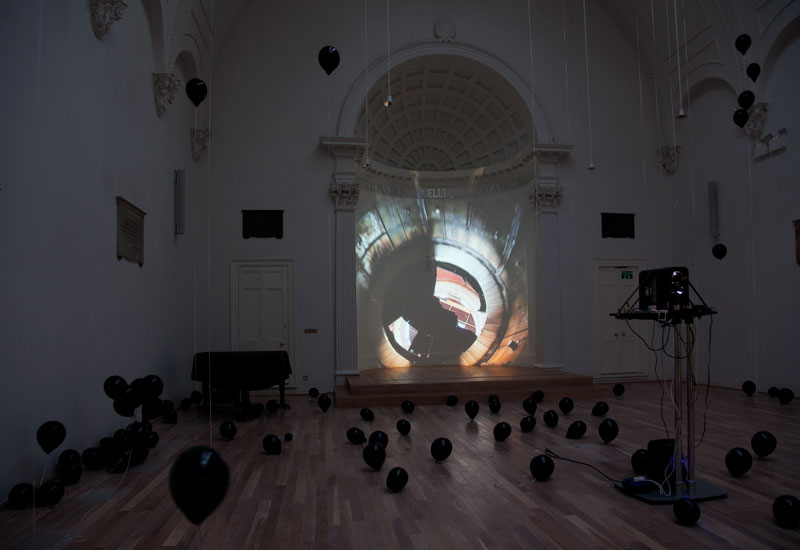
IN TRANSITION, Swiss Church London, 2012, London, GB
in transition
2012
Installation in der Swiss Church London
kuratiert von Heidi Brunnschweiler
Projektion in die Apsis der Kirche
Grösse 4 x 4.50m, Video endlos Loop [17:41 min]
Ton über Lautsprecher
Video auf Monitor im Schaufenster zur Endell Strasse, DVD, 6:15 min
mit Helium gefüllte schwarze Ballone
Konzept und Umsetzung, Fotografie, Video, Montage, Sound Design: Monika Rechsteiner
zusätzlich Fotografie und Sound Elektronik: Marcus Göppner
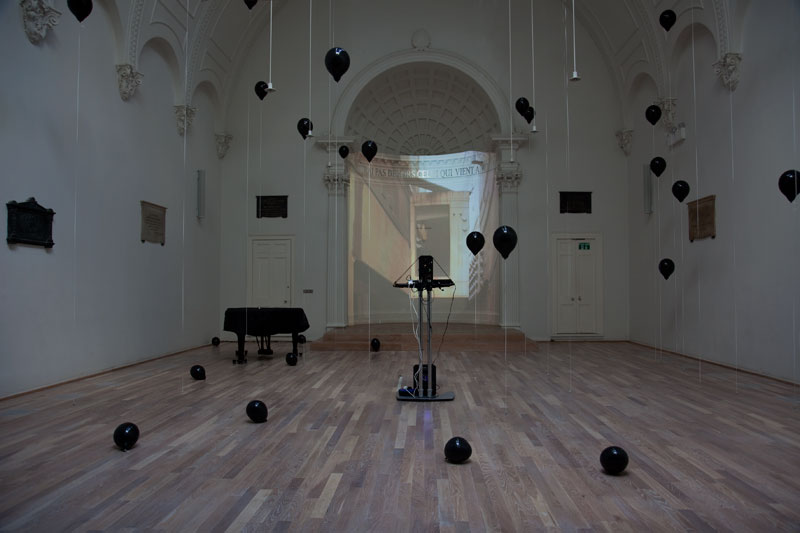
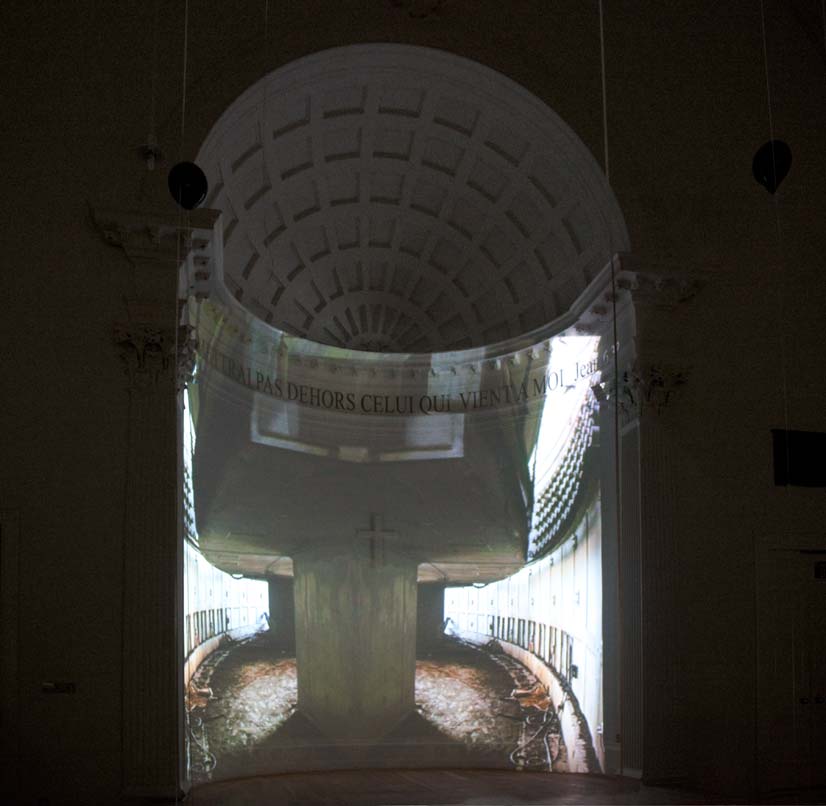
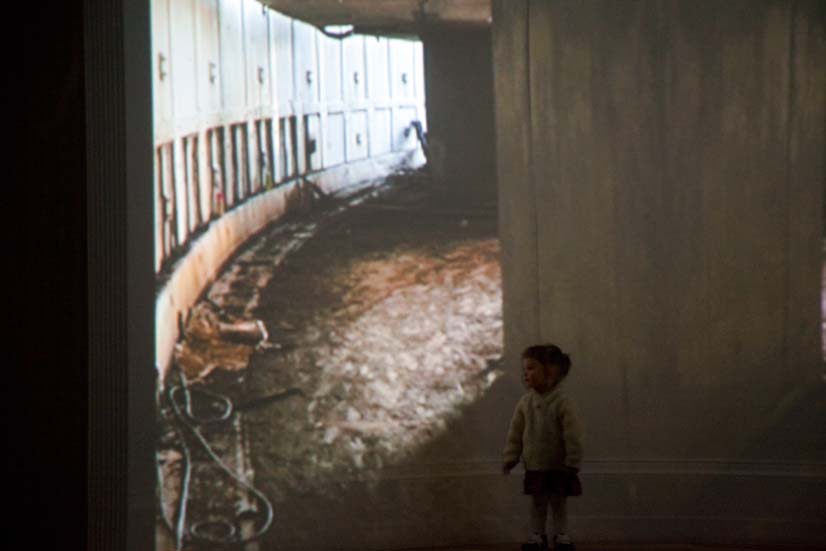
Mit Helium gefüllte schwarze Ballone verdunkeln den Kirchenraum. Im Verlaufe der Ausstellung sinken einige herab und bleiben auf dem Boden liegen. Einige Ballone schweben mitten im Raum auf unterschiedlichen Höhen.
Ein Video auf einem Monitor zur Strasse hin zeigt den Prozess des Verdunkeln durch die aufsteigenden Ballone. Der Monitor bildet gleichzeitig eine Brücke zwischen dem Kirchenraum und den Passanten.
Die Videomontage, projiziert in die Apsis der Kirche, nimmt architektonisch Bezug zum Ort (Symmetrie, Raumerweiterung), und nutzt den Kirchenraum zugleich für inhaltliche Auseinandersetzungen. Die Projektion zeigt eine Montage durch den Reaktor des Atomkraftwerkes in Stendal - das Herzstück eines Atomkraftwerks projiziert in das Herzstück der Kirche. Damit möchte ich subtil auf die Verbindung oder Verstrickung von Glaube und Wissenschaft hinweisen und anregen über Glaube und Atomkraft nachzudenken.
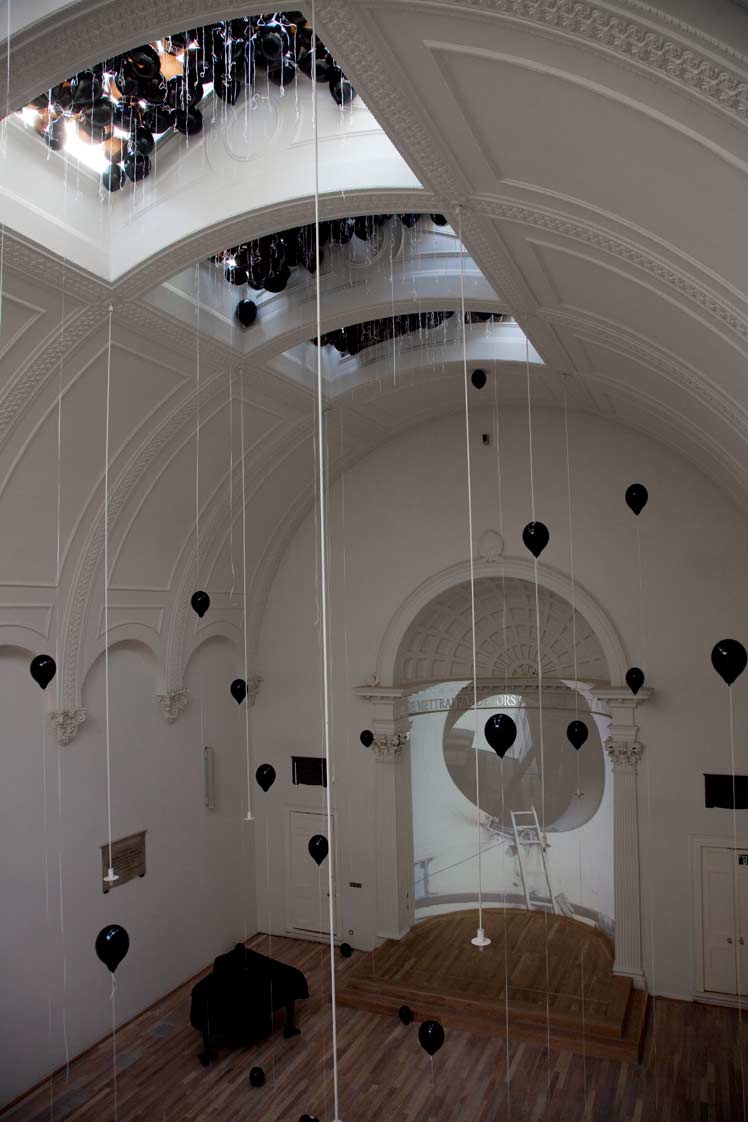
Installationsansichten in der Swiss Church London, GB
Text by Heidi Brunnschweiler
In Transition is a site specific intervention that consists of three parts: A balloon sculpture in the high vaulted hall, a screen with a 2nd video in the window facing Endell street and a video montage projected into the apse.
All three parts set out to investigate the formal qualities of the mid nineteenth century building by George Vulliamy and it’s inherent understanding of the world. Completed in 1855, the building is almost contemporary with the Cristal Palace in 1851, erected to house the first world fair. Or the Palm House at Kew Gardens, 1845 – 1848, dedicated to botanical research. These icons of the industrial and scientific age epitomize the modern style with their distinctive iron and glass.
Vulliamy, originating from the French part of Switzerland, took to the neoclassical style, common for ecclesiastical buildings at the time in France. This adaptation of the Greek paradigm was chosen to expresses the protestant virtues of severity, modesty and confidence in god’s eternal power.
In Transition responds to the room’s prominent qualities of symmetry and balance and addresses weightlessness and gravity, openness and confinement. In doing so, the installation reflects the architecture’s implicit meaning of a world as purposefully ordered, the inherent assumption of the neoclassical style.
The floating balloons address the infinite dimension of the space, while their dark colour and random arrangement counterweight it’s striving. Inverting gravity and weightlessness, their surreal quality opens the room to new horizons, both materially and intellectually.
The idea of opening up is developed further by the screen placed in the window of the front door, the threshold between inside and outside, artificial and real world. The passer by catches a glimpse of the act of releasing the balloons on the TV monitor. He is invited to enter and open the hortus conclusus of the church.
Through the video-montage, projected into the apse, the church room is contrasted with the reactor of an abandoned nuclear plant and so expanded to another site.
An atmospheric sound from the interior of the plant intertwines the apse and the reactor as the hearts of each universe. As the camera slowly drifts around the industrial ruin, it makes us aware of the measured architecture of the two sites. In doing so, it subtly addresses a possible relation between the field of religion and science.
Bringing these two realms together the video subtly alludes to Bazon Brocks suggestion to erect cathedrals for storing nuclear waste in the middle of our cities. With this unconventional idea he challenges our readiness to hide away what needs to be looked at. It is, in his eyes, our duty to face the consequences of our fundamental living conditions, since he sees in the nuclear waste the modern configuration of eternity. In Transition, with it scrutinizing camera drifts invites for meditation upon such questions, while at the same time stirring our awareness that responsibility can’t be delegated.
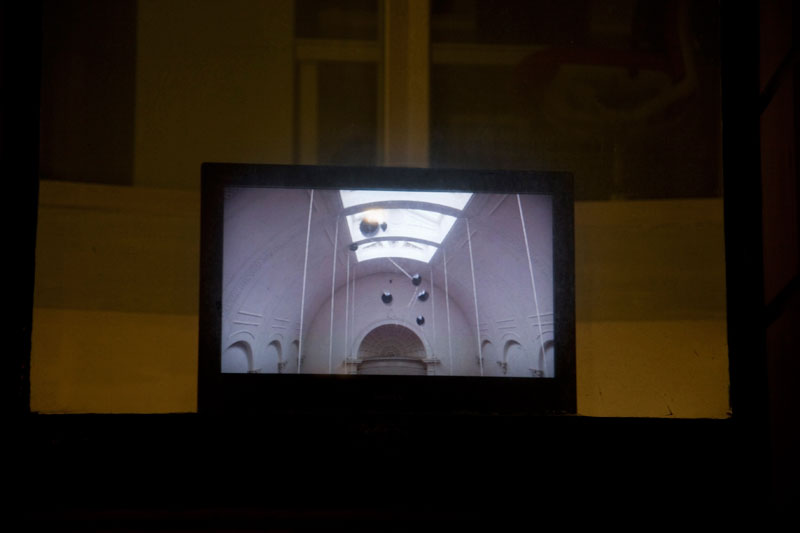
Monitor im Schaufenster zur Endell Strasse
© Monika Rechsteiner